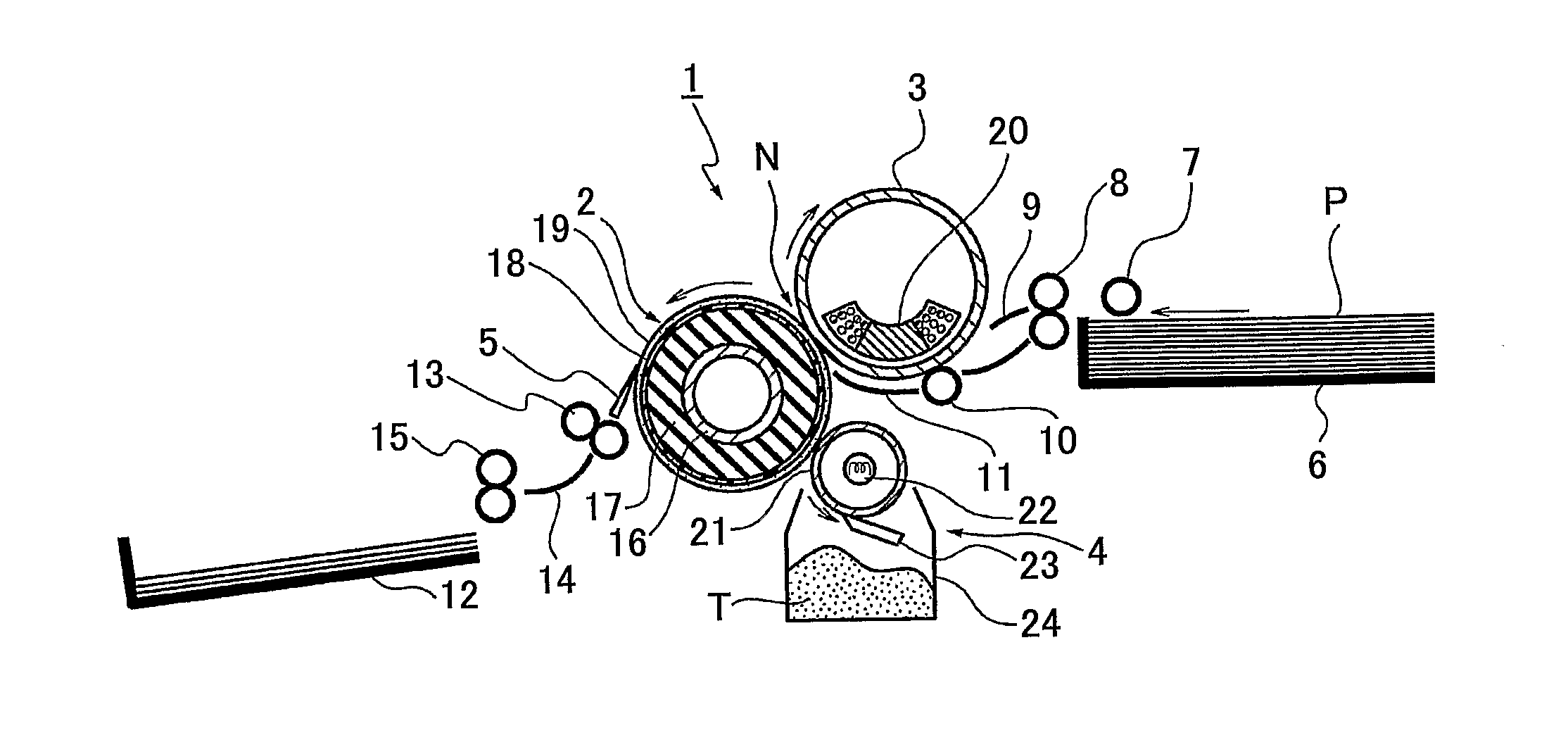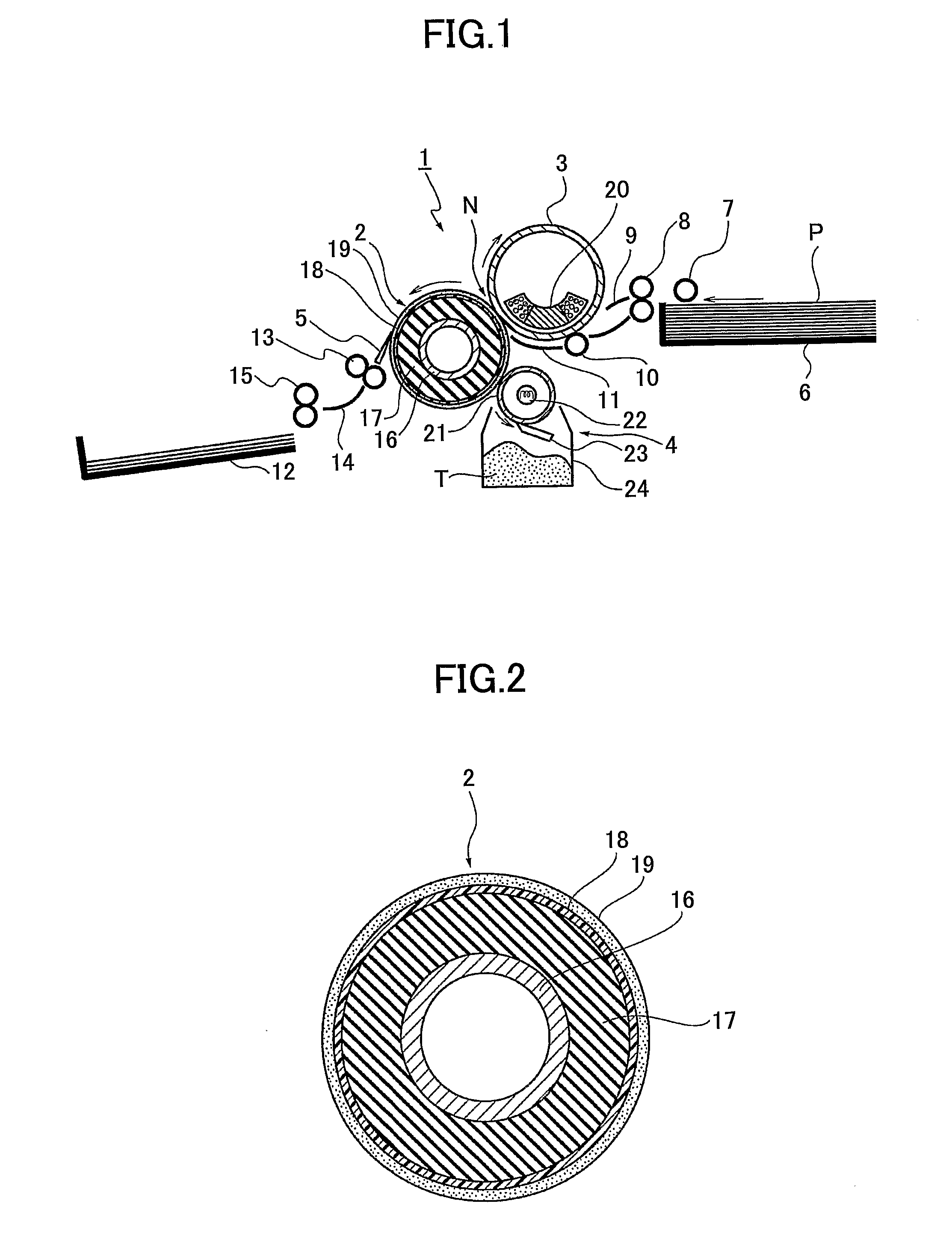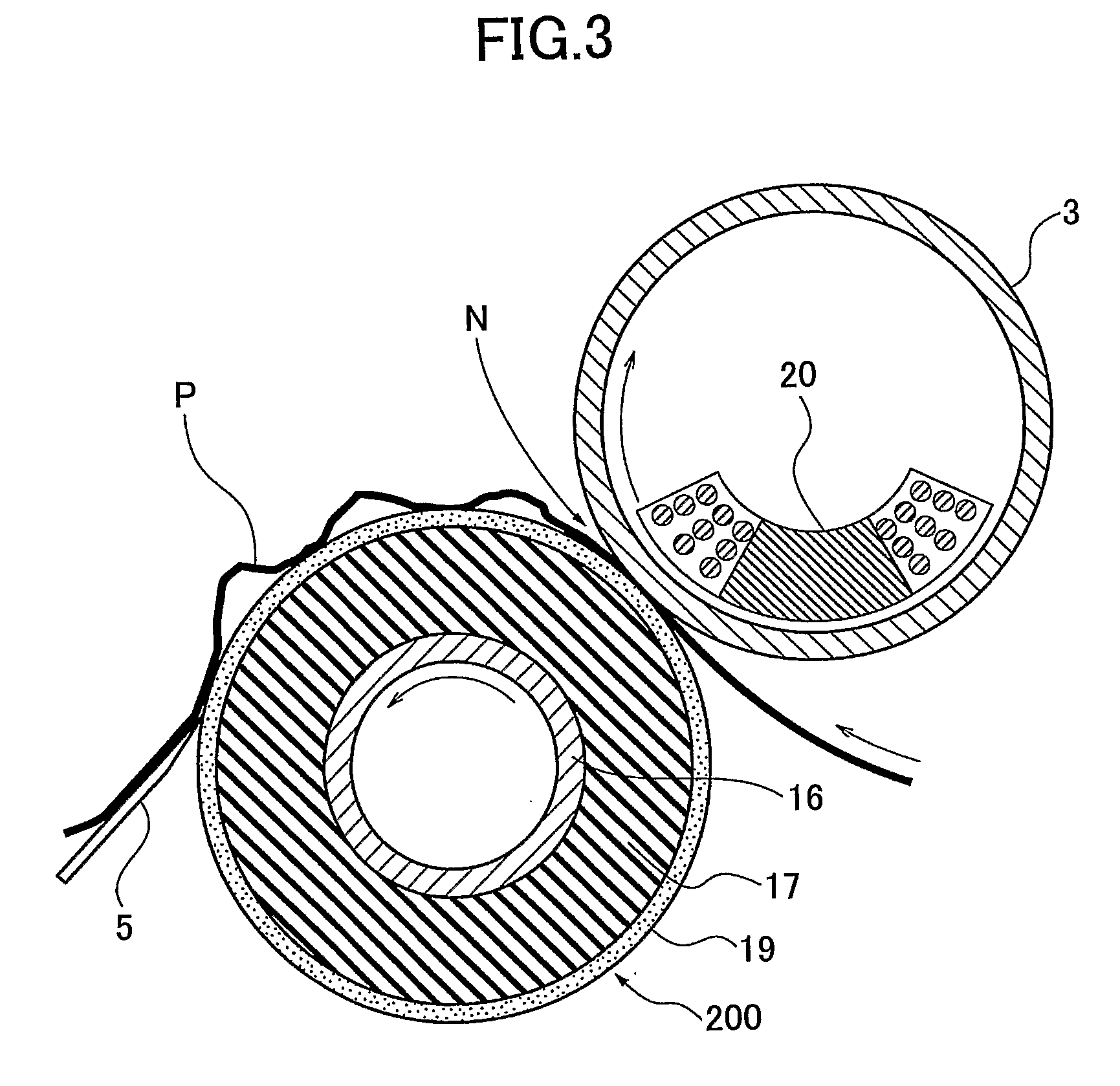Peeling member, member for forming peeling member, method of manufacturing peeling member, image remover, image forming and removing system, and image removing method
a peeling member and peeling technology, applied in the field of peeling members, can solve the problems of re-pulling wastepaper pulp quality, waste of paper or data, and generated waste of materials that require the use of landfills, and achieve the effects of removing the image formed on the recording material stably and completely, and large nip width
- Summary
- Abstract
- Description
- Claims
- Application Information
AI Technical Summary
Benefits of technology
Problems solved by technology
Method used
Image
Examples
first embodiment
[0062]FIG. 1 is a diagram showing an image remover 1 including a peeling roller 2 as a peeling member according to a first embodiment of the present invention.
[0063]FIG. 2 is a cross-sectional view of the peeling roller 2.
[0064]According to this embodiment, the image remover 1 is a unit or apparatus that removes a thermoplastic image forming substance (hereinafter, “image forming substance”) forming an image from recording material (recording medium) having the image formed thereon, thereby removing or erasing the image from the recording material, in an image forming apparatus such as a copier, printer, or facsimile machine.
[0065]Referring to FIG. 1, the image remover 1 according to this embodiment includes the peeling roller 2 rotatably supported to serve as a peeling member; a heat and pressure roller 3 rotatably supported in contact with the peeling roller 2 so as to serve as a pressure member, the heat and pressure roller 3 including a magnet coil for IH (Induction Heating) (IH...
second embodiment
[0166]FIG. 10 is a schematic diagram showing a configuration of an image remover 1a having the peeling roller 2 used as a peeling member according to a second embodiment of the present invention. In the below-described image remover 1a according to the second embodiment of the present invention, like components are denoted by like reference numerals as of the image remover 1 according to the first embodiment of the present invention and are not further explained.
[0167]As shown in FIG. 10, the image remover 1a according to an embodiment of the present invention includes an inverted conveyance part 52. In a case where an image is formed on each side of the recording material P, the inverting conveyance part 52 is configured to invert the recording material P and convey the recording material P to a temporary storage tray 51 instead of conveying the recording material P to the paper discharge tray 12 after an image (image forming substance) on one side of the recording material P is re...
third embodiment
[0173]FIG. 11 is a schematic diagram showing a configuration of an image remover 1b having an endless peeling belt 62 used as a peeling member according to a third embodiment of the present invention. In the below-described image remover 1b according to the third embodiment of the present invention, like components are denoted by like reference numerals as of the image removers 1 and 1a according to the first and second embodiments of the present invention and are not further explained.
[0174]As shown in FIG. 11, the image remover 1b according to an embodiment of the present invention has the endless peeling belt 62 spanning around a driving roller 63, a separation roller 64, an opposing roller 65, and a driven roller 66. A tension roller 67 contacting the outer surface of the peeling belt 62 provides a predetermined tension to the peeling belt 62. In this embodiment of the present invention, the separation roller 64 and the opposing roller 65 function as driven rollers. The peeling ...
PUM
| Property | Measurement | Unit |
|---|---|---|
| Young's modulus | aaaaa | aaaaa |
| thickness | aaaaa | aaaaa |
| thickness | aaaaa | aaaaa |
Abstract
Description
Claims
Application Information
 Login to View More
Login to View More - R&D
- Intellectual Property
- Life Sciences
- Materials
- Tech Scout
- Unparalleled Data Quality
- Higher Quality Content
- 60% Fewer Hallucinations
Browse by: Latest US Patents, China's latest patents, Technical Efficacy Thesaurus, Application Domain, Technology Topic, Popular Technical Reports.
© 2025 PatSnap. All rights reserved.Legal|Privacy policy|Modern Slavery Act Transparency Statement|Sitemap|About US| Contact US: help@patsnap.com



